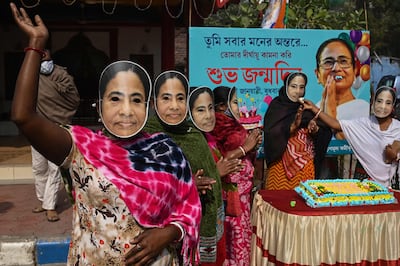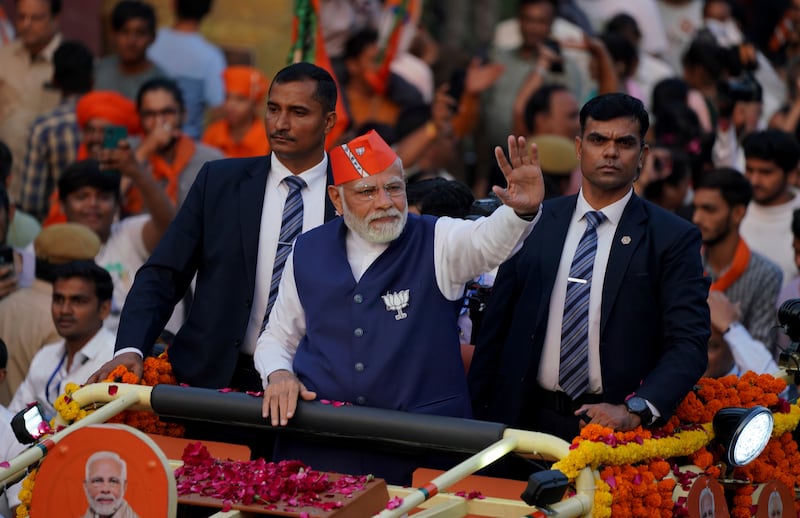First, the numbers. The Bharatiya Janata Party (BJP), led by India’s Prime Minister, Narendra Modi, won a resounding victory in the legislative election in the western Indian state of Gujarat. This was the party’s seventh consecutive win in the state’s election. The victory came on the back of 27 years of incumbency. The BJP won 156 of 182 seats in the state assembly, the most by any party in Gujarat’s electoral history. The party’s vote share was 52.2 per cent, its highest ever.
The BJP was the favourite to win this election. But the scale of it, and the manner in which it has crushed a united opposition – the Indian National Congress and the Aam Aadmi Party (AAP) – is staggering. It offers a mirror to the election-winning machine that is the BJP and the dwindling stature of the opposition it faces. In that, there are pointers to what lies ahead in the parliamentary election in 2024 – an election in which Mr Modi will seek the mandate to be Prime Minister for a third term.
In Gujarat, the BJP’s organisation on the ground and its cadre-based strength are exemplary. For these polls, it paid attention to internal voices on the ground and was fearless to take risks. Disaffection with the state’s handling of Covid-19, price rises and unemployment triggered rumblings of discontent with the incumbent chief minister and his legislators. One year before the vote, the BJP high command removed the chief minister and his entire cabinet. Several sitting legislators were denied tickets. The message was clear: politicians with the baggage of voters’ resentment would have no place in the electoral plan.
Traditionally an urban party in a state that is one of India’s most urbanised, the BJP focused on outreach programmes in rural areas and the tribal belt to widen the base of its support. Its efforts paid off. The campaign dovetailed local issues such as water supply, development and infrastructure with allusions to India’s achievements on the world stage – notably its taking over the G20 presidency. The Hindutva card and an appeal to Gujarati pride were never far from the heart of the campaign.
Mr Modi himself towered over the campaign in his home state. He indefatigably travelled across Gujarat, holding 31 rallies and two huge road shows. A Gujarat chief minister for 13 years before he went on to become Prime Minister in 2014, he consistently emphasised his connection with the state, insisting that a vote for the BJP meant a vote for him.
What was envisaged as a tripolar contest between the BJP, AAP and Congress turned into a unipolar one. Congress’s campaign was listless, its organisation poor, and its leadership weak to the point of being non-existent. The party’s win in the election in the tiny northern Indian hill state of Himachal Pradesh – which, for 30 years now, has voted out the incumbent – will be scant consolation. It will do nothing to change its weakening grasp on the national political narrative. The steady erosion of its clout in key states in the country continues unabated.
AAP, which governs Delhi and Punjab, and has aspirations of becoming the main challenger to the BJP in the next parliamentary election, has a long way to go before it assumes that mantle. It campaigned vigorously but won only five seats. Its lack of an election machinery, structure and organisation at the local level in states other than the two it controls will impede its progress.

So what now for 2024? His popularity undimmed, Mr Modi remains indisputably India’s tallest leader. The BJP, with wins in crucial, large states such as Uttar Pradesh and Gujarat, remains the national political hegemon. Never a party to stay still, it will use the momentum generated by this victory to plunge into the state elections scheduled for 2023 and the parliamentary vote in 2024.
Congress seems unable to reverse its decline. AAP has arrived. It might have won merely five seats, but a significant 13 per cent of the vote share, no mean feat for a fledgling party. However, it is far from being a challenger. A clutch of strong regional players, many of whom have national aspirations, such as West Bengal Chief Minister Mamata Banerjee, are jockeying to be at the forefront of an opposition alliance. But cobbling together such an alliance, especially with the fraught issue of which party should front it, and what role Congress is entitled to play in it, will be no easy task.
Nevertheless, a united opposition is the only way to carry the fight to the BJP. And this coalition must come into being before the general election. The trouble is, India’s political history shows that such coalitions, with varying ideologies, have often collapsed under the weight of their own contradictions. Besides, recent events indicate that voters nowadays are quick to spot and shun opportunistic political alliances. Still, with no single party capable of challenging the BJP on a national level, leaders on the other side of the political spectrum must bury their differences, swallow their egos, and come together. If that does not happen, the BJP’s juggernaut will be unstoppable.





